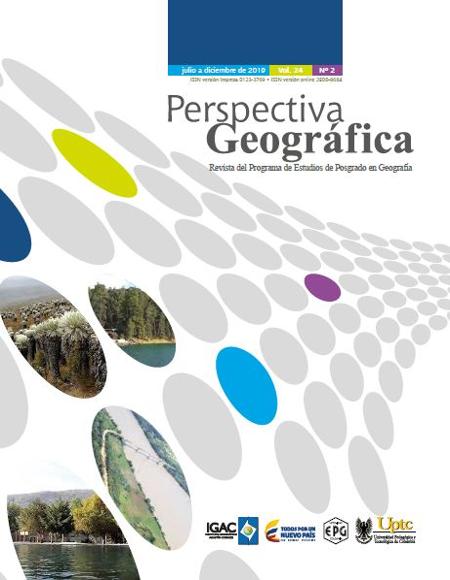Liminal Landscapes. The Conception of Nature in Border Territories

Abstract
This text addresses the relationship between literature, philosophy, history and geography, focusing on a very particular element: the landscape. This through the analysis of its representation and enunciation in the liminal scenarios located southeast of New Spain from three narrations of travelers who toured the area between the late seventeenth and early nineteenth centuries. This with the purpose of understanding what is the conception of nature that prevailed over them in relation to the three theses of the Gorgian thought. From this analysis it is argued that in the conception of nature, nothingness and non-being are, from the idea of emptiness, potentially more creative elements for narrating the landscape than the whole and being seen from space which serves as the setting for the action of man.
Keywords
Nature, Landscape, Southeast, New Spain, Boundaries, Vaccum.
References
Bonnemaison, Joel. 2004. La géographie culturelle. París: Editions du C.T.H.S.
Bridges, George Wilson. 1827. The Annals of Jamaica. Vol. 1. London: John Murray.
http://archive.org/details/annalsofjamaica01briduoft.
Cervera Molina, Ana Elvira. 2015. “Todo es cuestión de enfoque: De Piratas a Settlers. La
construcción simbólica de la península de Yucatán como una isla continental. Una aproximación a la creación del discurso histórico.” En Interrogando los límites del texto. Ensayos de crítica literaria, editado por Margaret Shrimpton Masson y Óscar Ortega, 21–38. Mérida: Universidad Autónoma de Yucatán.
Colli, Giorgio. 2012. Gorgias y Parménides. México: Sexto piso.
Dampier, William. 2004. Dos viajes a Campeche, con el facsimilar de la edición inglesa de 1705.
Segunda. México: Miguel Ángel Porrúa Editores.
Giménez, Gilberto, y Catherine Héau Lambert. 2007. “El desierto como territorio, paisaje y
referente de identidad.” Culturales III (5): 7–42.
Harley, J. B. 2005. La nueva naturaleza de los mapas. Ensayos sobre la historia de la
cartografía. México: Fondo de Cultura Económica.
Hiernaux, Daniel, y Alicia Lindón. 1993. “El concepto de espacio y el análisis regional.”
Revista Secuencia 25 (enero-abril, Instituto Mora): 89–110.
Macías Zapata, Gabriel Aarón. 2004. El vacío imaginario. Geopolítica de la ocupación territorial
en el Caribe Oriental mexicano. México: CIESAS.
Nogué, Joan. 2012. “Intervención en imaginarios paisajísticos y creación de identidades
territoriales.” En Geografías de lo imaginario, editado por Alicia Lindón y Daniel Hiernaux, 129–39. México: Universidad Autónoma Metropolitana, Anthropos.
Rio Fernandes, José Alberto, Elise Savério Sposito, y Delfina Trinca Fighera, (Eds.) 2015.
Diccionario de geografía aplicada y profesional. Terminología de análisis, planificación y gestión del territorio. León: Universidad de León.
http://www.uv.es/~javier/index_archivos/Diccionario_Geografia Aplicada.pdf.
Salgari, Emilio. 2004. “La reina de los caribes.” Biblioteca Virtual Universal.
http://www.biblioteca.org.ar/libros/155502.pdf.
Santos, Milton. 1996. A natureza do espaço. Técnica e tempo. Razão e emoção. São Paulo: Editora
Hucite.
Sauer, Carl O. 1956. “The Education of a Geographer.” Annals of the Association of American
Geographers 46 (3): 287–99.
Turner, Victor W. 1980. La Selva de Los Símbolos. México: Siglo XXI.
Van Gennep, Arnold. 2008. Los Ritos de Paso. España: Alianza Editorial.
Volpi, Franco. 2005. “Gorgias de Leontinos.” Enciclopedia de Obras de Filosofía. Herder.